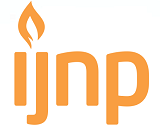Myths and Failure of Exclusive Breastfeeding: Study in Buaran Community Health Center Pekalongan Regency Central Java
DOI:
https://doi.org/10.18196/ijnp.2282Keywords:
culture, exclusive breastfeeding, mythAbstract
Abstract
Background: Failure of exclusive breastfeeding is still high in Pekalongan regency, Central Java Indonesia. The one of reasondue to the existing myth about breast milk and breastfeeding activity in society culture.
Objective: This study aimed to determine the relationship between myth about breastfeeding and failure of exclusive breastfeeding.
Method: This cross-sectional study design conducted among 151 mothers with infant 6-12 month age which selected by cluster sampling, in Buaran Community Health Center in Pekalongan Regency Central Java Indonesia, from January to May 2017. An instrument used was a questionnaire developed by the reseacher.
Result: The results showed 70.1% participants failed exclusive breastfeeding, 56.9% of them believed negative myths about exclusive breastfeeding by p = 0.001 (95% CI: 1,757-8,057). The characteristic of participants was in reproductive age (81,5%), multiparous (71,5%), unemployed (70,9%), and from extended family (66,9%). Most of the participants had a vaginal delivery (86,8%). There was asignificant relationship between myths about breastfeeding and failure of exclusive breastfeeding. Breastfeeding education should deliver in community-based, in terms of growing breastfeeding culture, in Indonesian society.
References
Departement of health in Pekalongan regency (Dinas Kesehatan Kabupaten Pekalongan).(2016). Exclusive breastfeeding coverage in Pekalongan Regency. Pekalongan Indonesia : Departament of health in Pekalongan regency .
Eram,U. (2017). A riview article : myths, beliefs and malpractices relating to breastfeeding and complementary feeding practices. International journal of pharmaceutical science invention, 6.(I), 14-16.
Heidari, Z., Keshvari, M., Kohan, S. (2016). Breastfeeding Promotion, Challenges and Barriers: a Qualitative Research. International Journal Pediatrics. 4(5), 1687-95.
Indonesian Ministry of Health (Kemenkes RI). (2015). Stategic planning Indonesian Ministry of health in 2015-2019. Retrived from http://www.depkes.go.id/resources/download/info-publik/Renstra-2015.pdf
Indonesian Ministry of Health (Kemenkes RI). (2017). Indonesian healthprofile 2016. Retrieved from http://www.depkes.go.id/resources/download/pusdatin/profil-kesehatan-indonesia/Profil-Kesehatan-Indonesia-2016.pdf
Kamath, S. P., Garg, D., Khan, M. K., Jain, A., & Baliga, B. S. (2016). Perceptions and practices regarding breastfeeding among postnatal women at a district tertiary referral government hospital in Southern India. Scientifica, 2016, 1-6, retrieved from. http://doi.org/10.1155/2016/5430164
Morales, S.S. (2013). Myth and the construction of meaning in mediated culture. An InternationalJournal of Pure Communication Inquiry, 1(2), 33-43. Retrieved from http://komejournal.com/files/3solamoralesabstract.pdf
Madhavi, N., & Manikyamba, D. (2016). Evaluation of factors responsible for failure of exclusive breastfeeding for first 6 months-Hospital based study. International journal of contemporary medical research, 3(6), 1701-1704.
Marzuki, N.S., Yohmi, E., Nainggolan, E., Hegar, B., Oswari, H., Nyoman, G.A., Partiwi. (2014). Breastfeeding practices in mothers: a qualitative study. Paediatrica Indonesiana, 54 (1), 35-41.
Stuebe, A. (2009). The Risks of Not Breastfeeding for Mothers and Infants. Reviews in Obstetrics and Gynecology, 2(4), 222–231
Thet, M. M., Khaing, E. E., Diamond-Smith, N., Sudhinaraset, M., O.S., &Aung, T. (2016). Barriers to exclusive breastfeeding in the Ayeyarwaddy Region in Myanmar: Qualitative findings from mothers, grandmothers, and husbands. Appetite, 96, 62-69. doi:10.1016/j.appet.2015.08.044
World Health Organization. (2013). Global strategy for infant and young child feeding. Retrieve from http://www.who.int/nutrition/publications/gs infant feeding text eng.pdf
Wanjohi, M., Griffiths, P., Wekesah, F., Muriuki, P., Muhia, N., Musoke, R. N.,Kimani-Murage, E.W. (2016). Sociocultural factors influencing breastfeeding practices in two slums in Nairobi, Kenya. International Breastfeeding Journal, 12(5), 92-97. Retrieved from http://doi.org/10.1186/s13006-016-0092-7.
Yaqub, A. & Gul, S. (2013). Reason for failure of exclusive breastfeeding in children less than six mother of age. Journal of Ayub Medical Collage Abbottabad, 25(1-2), 165-167. Retrieved from http://www.ayubmed.edu.pk/JAMC/25-1/Asma Yaqub.pdf
Downloads
Published
Issue
Section
License
License
Articles published in the IJNP (Indonesian Journal of Nursing Practices) are licensed under a Attribution 4.0 International (CC BY 4.0) license. You are free to:
- Share — copy and redistribute the material in any medium or format.
- Adapt — remix, transform, and build upon the material for any purpose, even commercially.
This license is acceptable for Free Cultural Works. The licensor cannot revoke these freedoms as long as you follow the license terms. Under the following terms:
Attribution — You must give appropriate credit, provide a link to the license, and indicate if changes were made. You may do so in any reasonable manner, but not in any way that suggests the licensor endorses you or your use.
- No additional restrictions — You may not apply legal terms or technological measures that legally restrict others from doing anything the license permits.
Copyright
Authors who publish with IJNP (Indonesian Journal of Nursing Practices) agree to the following terms:
- Authors retain copyright and grant IJNP (Indonesian Journal of Nursing Practices) the right of first publication with the work simultaneously licensed under an Attribution 4.0 International (CC BY 4.0) that allows others to remix, adapt and build upon the work with an acknowledgment of the work's authorship and of the initial publication in IJNP (Indonesian Journal of Nursing Practices).
- Authors are permitted to copy and redistribute the journal's published version of the work (e.g., post it to an institutional repository or publish it in a book), with an acknowledgment of its initial publication in IJNP (Indonesian Journal of Nursing Practices).














